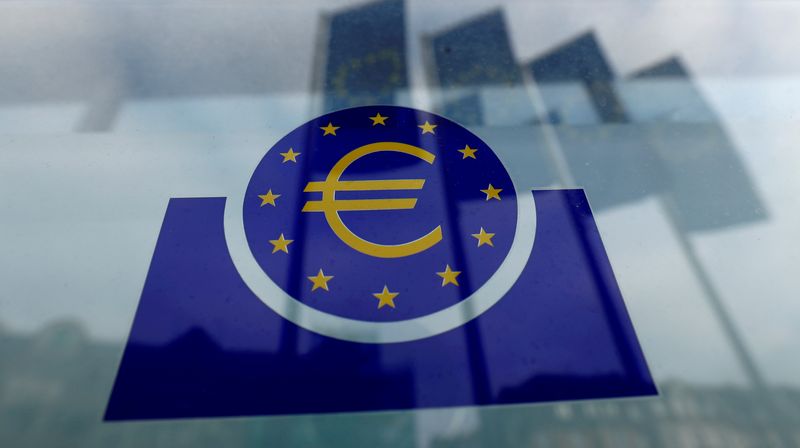 © Reuters. FILE PHOTO: The European Central Bank (ECB) logo in Frankfurt, Germany, January 23, 2020. REUTERS/Ralph Orlowski
© Reuters. FILE PHOTO: The European Central Bank (ECB) logo in Frankfurt, Germany, January 23, 2020. REUTERS/Ralph Orlowski
(Refiles to correct dates in advisory: (There will be no GVD/EUR euro zone government bond market report on Friday, April 15 and Monday, April 18. Reuters will resume publication of the report on Tuesday, April 19.))
By Yoruk Bahceli and Dhara Ranasinghe
LONDON (Reuters) -Short-dated euro zone bond yields and the single currency fell on Thursday as traders pared back rate hike bets after the European Central Bank refrained from switching to a more hawkish stance.
Bond yields have marched higher in recent weeks as investors bet the ECB will raise rates sooner rather than later to curb euro zone inflation which, at 7.5%, is well above the bank's 2% target.
But the ECB concluded its latest meeting with cautious steps to unwind support and avoiding any firm pledge beyond the end of bond buys it had already laid out in March.
The lack of commitment pushed traders to trim rate hike bets. Money market futures moved to price in just over 60 bps worth of ECB hikes by December, versus the earlier 70 bps.
Futures dated to the ECB's July meeting price in around 15 bps worth of hikes, down from 20 bps earlier on Thursday.
"Today's statement makes more than two hikes in 2022 almost impossible, whereas part of the market expected something like end of the (asset purchase programme) in June announced today and consequently possibly three hikes," said Louis Harreau, ECB watcher at Credit Agricole (OTC:CRARY).
"So the communique kind of removes this extreme pricing."
That pushed short-dated government bond yields, which are closely aligned with interest rate expectations, sharply lower.
Two-year German bond yields fell as much as 7 bps and briefly turned negative. By 1525 GMT they were down a basis point to 0.06%, versus 0.09% just before the ECB statement.
The reduction of rate hike bets also hurt the euro, which tumbled to a two-year low at $1.07580 and hit its lowest level versus sterling since March 7, at 82.75 pence.
Sources told Reuters following the meeting that the ECB could still hike rates in July but had chosen to keep options open given Ukraine-driven uncertainty.
Longer-dated government bond yields initially dropped less than shorter-dated ones, then rose along with U.S. Treasury yields, which surged after the U.S. session open.
German 10-year yields, the benchmark for the euro area, were last 6 bps higher at 0.83%.
That steepened Germany's yield curve as measured by the gap between 2- and 10-year yields to around 80 bps, the steepest since January 2019.
The yield curve "reflects that ECB is in no rush to tighten monetary policy despite inflation (being) elevated", said Piet Christiansen, chief analyst at Danske Bank.
Yield curves flattening in other markets like the United States have been seen as an indication that central banks might choke off growth in their bid to stamp out inflation.
Germany's 30-year yield rose above 1% for the first time since late 2018.
Italian 10-year yields after their earlier fall were up 11 bps to 2.49%.
That underperformance pushed the risk premium over German debt briefly to around 169 bps, the highest in nearly a week.
In equities, Europe's broad STOXX 600 index extended gains and was last up 0.7%, also helped by a positive Wall Street open. A sub-index of euro zone banking stocks was almost 0.9% higher.

